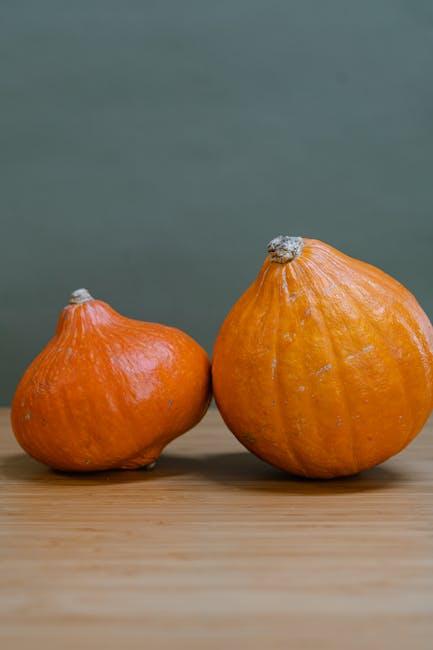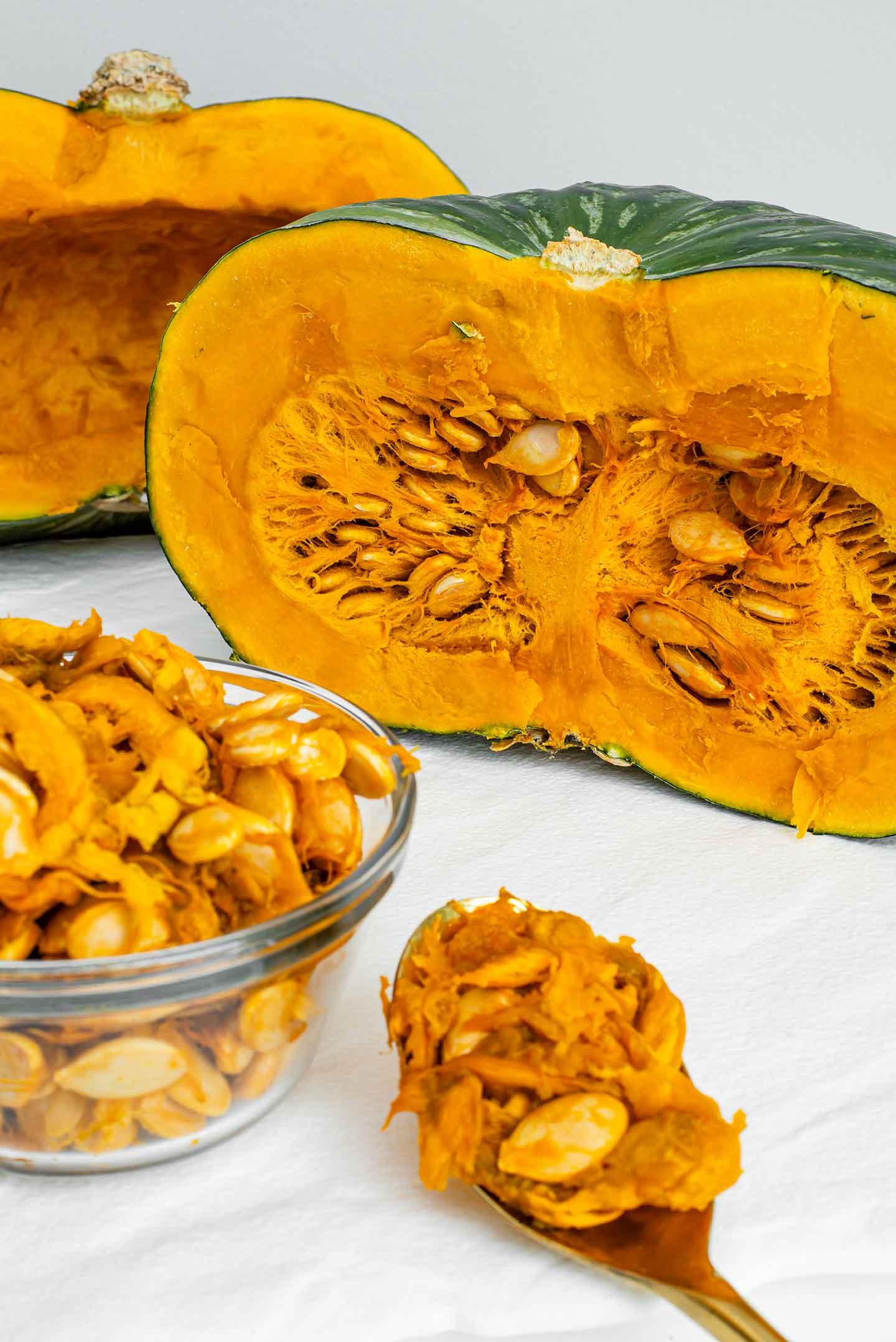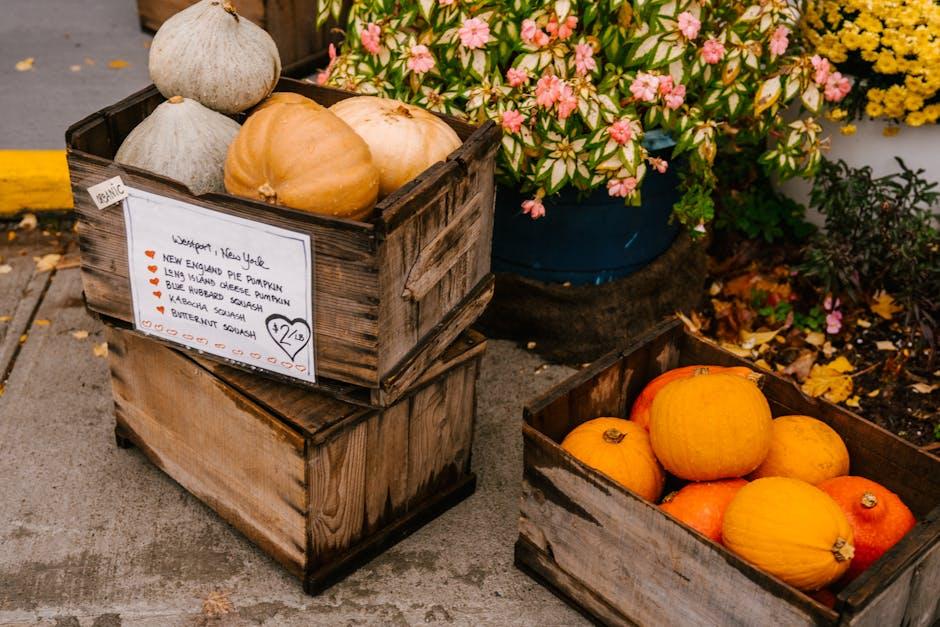Table of Contents
- Understanding Kabocha Squash and Its Nutritional Benefits
- Delicious Ways to Prepare Kabocha Squash in Your Kitchen
- The Versatility of Kabocha Squash in Seasonal Recipes
- How to Select and Store Kabocha Squash for Optimal Freshness
- Exploring Global Cuisines Featuring Kabocha Squash
- Q&A
- Insights and Conclusions


Understanding Kabocha Squash and Its Nutritional Benefits
Kabocha squash, often referred to as Japanese pumpkin, stands out not just for its striking dark green skin and bright orange flesh, but also for its nutritional prowess. Rich in vitamins A and C, this winter squash is a powerhouse of health benefits. Vitamin A contributes to eye health, while vitamin C supports the immune system, helping the body fend off common illnesses. Additionally, kabocha is abundant in antioxidants, which play a crucial role in combating oxidative stress and inflammation in the body.
What sets kabocha squash apart from its other squash relatives is its remarkable fiber content. With about 4 grams of fiber per cup, it aids in digestion, promotes a feeling of fullness, and supports blood sugar regulation. Here are some essential nutrients found in kabocha squash:
- Calories: Approximately 50 per cup
- Carbohydrates: 12 grams
- Protein: 2 grams
- Fat: Less than 1 gram
Besides the nutritional aspect, kabocha squash is incredibly versatile in the kitchen. It can be roasted, pureed for soups, or added to stews and curries, offering a natural sweetness that enhances dishes. When you prepare kabocha, you not only indulge in its unique flavor but also embrace a host of health benefits, making it a fantastic addition to a balanced diet. Whether you enjoy it in savory or sweet recipes, it’s an ingredient that delivers both taste and nutrition.
Delicious Ways to Prepare Kabocha Squash in Your Kitchen
Kabocha squash, often hailed for its sweet, nutty flavor and velvety texture, is a versatile ingredient that can elevate any dish. Roasting it is one of the simplest and most delicious ways to prepare kabocha. Cut the squash into wedges or cubes, toss with olive oil, salt, and your favorite herbs, such as rosemary or thyme, then roast in a preheated oven at 400°F (200°C) for about 25-30 minutes. The result is a caramelized exterior with a tender inside, perfect as a side dish or tossed into a grain salad.
Another fantastic method is to create a creamy kabocha soup. Start by sautéing onions and garlic in a pot, then add peeled and cubed kabocha squash, along with vegetable broth and spices like ginger and nutmeg. Once the squash is tender, blend the mixture until smooth for a comforting and satisfying bowl of soup. For a decadent twist, finish with a splash of coconut milk for added richness.
For those looking to incorporate kabocha into their breakfast, consider preparing pancakes. Combine pureed kabocha with flour, baking powder, eggs, milk, and a touch of sugar to make a lush batter. Cook on a hot griddle until golden brown. Serve with maple syrup or yogurt, and you’ll have a delightful start to your day. Here’s a quick comparison table of different preparation methods:
| Preparation Method | Flavor Profile | Best For |
|---|---|---|
| Roasting | Sweet & Nutty | Side Dish, Salads |
| Soup | Rich & Creamy | Comfort Food |
| Pancakes | Sweet & Fluffy | Breakfast |


The Versatility of Kabocha Squash in Seasonal Recipes
Kabocha squash, often referred to as the Japanese pumpkin, carries a delightful sweetness and nutty flavor that makes it a superstar in the kitchen. Its vibrant orange flesh is rich in vitamins A and C, which makes it not just delicious but also a nutritious addition to your seasonal repertoire. This squash can be roasted, pureed, or sautéed, making it a versatile ingredient for various dishes. Whether you’re crafting soups, sides, or main courses, kabocha squash effortlessly adapts to your culinary creations.
In savory applications, consider using kabocha squash in autumn-inspired risottos or as a star ingredient in a warm salad paired with hearty greens and toasted nuts. The creamy texture of cooked kabocha adds depth to dishes and complements spices like sage, thyme, and nutmeg beautifully. Additionally, you can incorporate its bold flavor into curries and stews, where it absorbs spices while contributing to a satisfying, hearty meal.
Sweet recipes come alive with kabocha squash as well. Its natural sweetness makes it a prime candidate for seasonal desserts, such as pies and muffins, adding a twist to traditional pumpkin treats. Try using kabocha puree in pancakes or as a filling for tart shells, topped with spiced whipped cream. You can even make kabocha squash brownies for a rich dessert that’s both fulfilling and a bit healthier, thanks to the added nutrients from the squash.


How to Select and Store Kabocha Squash for Optimal Freshness
When selecting kabocha squash, look for fruits that are firm and heavy for their size. The skin should be a deep, vibrant green, with a few orange accents, indicating ripeness. Avoid squash with soft spots or blemishes, as these imperfections may signify spoilage. Inspect the stem carefully; it should be intact and dry, suggesting that the squash was picked at its prime.
To store kabocha squash and maintain its freshness, keep it in a cool, dark place with good ventilation, such as a pantry or cellar. Ideally, the temperature should range between 50°F and 60°F (10°C to 15°C). Here are some storage tips to ensure longevity:
- Do not refrigerate before cutting, as cold temperatures can alter the texture.
- Store whole squash unwrapped; wrapping can lead to mold formation.
- Once cut, wrap the pieces in plastic or place them in an airtight container, and refrigerate.
For those looking to extend their kabocha squash’s shelf life even further, consider freezing. To freeze, cut the squash into chunks, steam, and let cool. Then place in freezer-safe bags, removing as much air as possible. When properly stored, kabocha squash can last up to 6 months in the freezer. To make things easier, refer to the table below for quick reference on storing methods and durations:
| Storage Method | Duration |
|---|---|
| Whole Kabocha (unrefrigerated) | 1-3 months |
| Cut Kabocha (refrigerated) | 1 week |
| Frozen Kabocha (properly stored) | Up to 6 months |


Exploring Global Cuisines Featuring Kabocha Squash
Kabocha squash, often referred to as Japanese pumpkin, brings a unique flavor and texture to global cuisines. Its sweet, nutty taste and creamy flesh make it a popular ingredient in numerous dishes across various cultures. In Japan, kabocha is traditionally enjoyed in dishes such as kabocha no nimono (simmered kabocha), where it is boiled with soy sauce and mirin, allowing the squash to absorb rich flavors while maintaining its characteristic sweetness. This preparation highlights the squash’s ability to complement both savory and sweet profiles.
In addition to Japanese dishes, kabocha squash has made its way into Latin American cuisine, particularly in soups and stews. For example, the hearty calabaza en tacha is a delightful Mexican dessert where the squash is slowly cooked with sugar and cinnamon until caramelized. This dish not only showcases the squash’s versatility but also its ability to enhance desserts with its natural sweetness. The vibrant color and rich flavor of kabocha make it a visually appealing and tasty addition to holiday feasts and family gatherings.
Furthermore, kabocha can play a star role in various fusion recipes, bringing a delightful twist to classic dishes. For instance, consider using roasted kabocha squash in salads or grain bowls, where it adds a creamy texture that contrasts beautifully with crisp vegetables. Here’s a quick overview of some popular kabocha preparations worldwide:
| Dish | Region | Main Ingredients |
|---|---|---|
| Kabocha no nimono | Japan | Kabocha, soy sauce, mirin |
| Calabaza en tacha | Mexico | Kabocha, sugar, cinnamon |
| Kabocha soup | Global | Kabocha, coconut milk, spices |
Exploring kabocha squash across different cultures reveals the squash’s impressive adaptability and deliciousness. As culinary traditions continue to blend and evolve, kabocha remains a celebrated ingredient that resonates with both cultural significance and a scrumptious flavor profile. Whether you enjoy it roasted, in soups, or in innovative salads, kabocha squash offers endless possibilities for delicious global cuisine.
Q&A
Q&A: All About Kabocha Squash
What is kabocha squash?
Kabocha squash, often referred to as Japanese pumpkin, is a type of winter squash that boasts a rich, sweet flavor and fine texture. Its skin is typically dark green, while the flesh is vibrant orange and known for its deliciously creamy consistency when cooked.How do you choose a good kabocha squash?
When selecting kabocha squash, look for a fruit that feels heavy for its size and has a firm, unblemished skin. The stem should be dry, and the squash should produce a dull sound when tapped. Avoid any squashes with soft spots or a shiny skin, as these are signs of an overripe or spoiled product.How do you prepare kabocha squash for cooking?
Preparing kabocha squash is quite simple. Start by washing the exterior to remove any dirt. You can either peel it or leave the skin on, as it becomes tender when cooked. To cut it, place the squash on a sturdy surface, slice it in half, and scoop out the seeds. Then, cut into cubes, wedges, or slices as desired for your recipe.What are the best cooking methods for kabocha squash?
Kabocha squash is incredibly versatile and can be enjoyed in various ways. Here are a few popular methods:- Roasting: Toss cubes of squash in olive oil, season with salt and pepper, and roast in the oven until tender.
- Steaming: Steam slices or cubes until soft for a health-conscious side dish.
- Soups: Puree cooked kabocha in soups for a creamy texture and rich flavor.
- Baking: Incorporate into pies or muffins for a seasonal treat.
What is the nutritional value of kabocha squash?
Kabocha squash is packed with nutrients! It’s an excellent source of vitamins A and C, fiber, and antioxidants. The high fiber content aids in digestion, while the vitamins contribute to overall health, boosting immunity and skin health. Plus, its natural sweetness makes it a delightful substitute for refined sugars in certain recipes.Can you eat the skin of kabocha squash?
Yes, you can eat the skin of kabocha squash! When cooked properly, the skin becomes tender and can enhance the dish’s nutritional profile. However, if you prefer a softer texture or are using it in recipes where texture matters, peeling may be the better option.How should you store kabocha squash?
To ensure longevity, store whole kabocha squash in a cool, dark place, such as a pantry or cellar, where it can last for several weeks. Once cut, wrap the unused portion tightly in plastic wrap and refrigerate. It’s best to consume it within a few days for optimal freshness.Are there any recommended recipes using kabocha squash?
Absolutely! Here are a few delightful ideas:- Kabocha Squash Soup: A creamy blend of roasted kabocha, garlic, ginger, and coconut milk.
- Kabocha Risotto: A hearty dish featuring Arborio rice, vegetable broth, and sautéed kabocha.
- Kabocha Hummus: A twist on the classic, this spread blends kabocha with tahini, lemon juice, and spices for a tasty dip.
